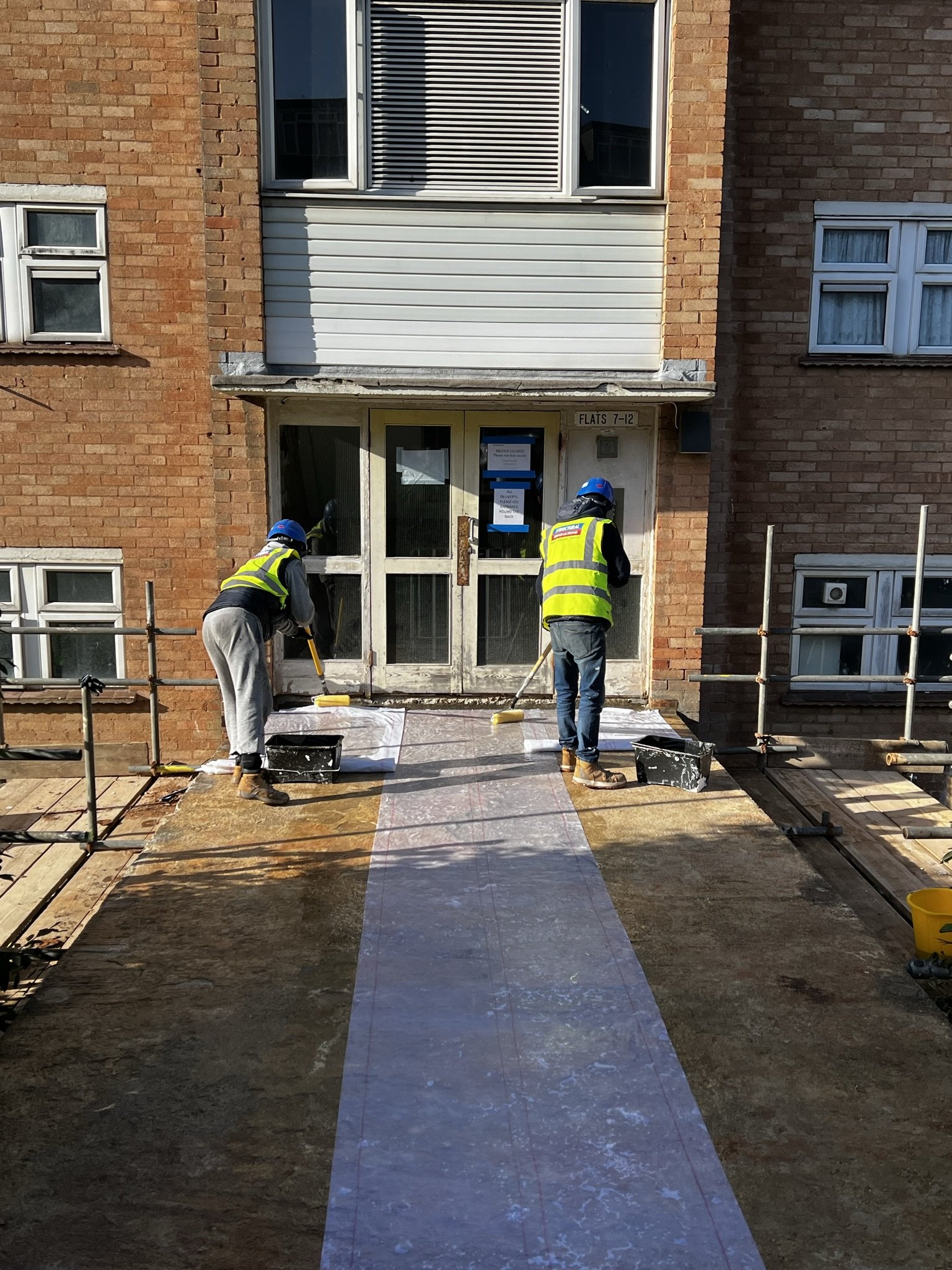Dinapore House, Brighton

Throughout October and November we have been renovating two reinforced concrete pedestrian bridges which provide access to a 1960s residential block of flats close to Brighton City centre.
Both bridges which span from the pavement over sloping land to the entrances of the block, have received little or no maintenance since their construction. This had resulted in severe deterioration of the concrete decks including exposed corroded reinforcement and moisture leeching into and through the substrate.
A structural survey was commissioned in early January this year by the client Brighton & Hove City Council – Housing Centre to establish the condition of both structures. As part of the brief for the structural survey/report, Fosroc Limited, a British manufacturer of construction chemicals were approached to propose a suitable specification for the repair, waterproofing and protection of the bridges, which we were then asked to price against.
The project was let through one of its local approved contractors, BCS Robertson Limited, Portslade, Brighton, who in turn employed us as their specialist sub-contractor.
Enabling Works
Before we mobilised extensive vegetation needed to be removed to provide access to allow scaffold to be erected on either side of both bridge. This allowed all existing handrails to be safely removed from site for refurbishment and to extend their height to current regulations. Further enabling works involved the removal of all paving slabs and associated bedding mortar to expose the structural decks beneath.
Survey & Preparation
With all the structural elements of the bridge decks now fully accessible were able to complete a full visual and hammer test survey to identify all hollow/debonded concrete. All defective concrete was then broken back to sound substrate using 110v breakers and angle grinders.
Reinforcement
All exposed mild steel reinforcement was then further inspected and in locations where excessive loss of section were present, replacement reinforcement was drilled and secured in Lokfix E75. All exposed reinforcement (existing and new) was mechanically wire brushed before being treated with 2 coats of Nitoprime ZincRich Plus.
Concrete Repair
For large areas temporary timer shutters were constructed and Renderoc LA (micro-concrete) was poured to reinstate the prepared locations. Smaller areas were treated with hand placed repair mortars, Renderoc HB45 and Renderoc GP.
Waterproofing
The upper surfaces of the bridge decks were pressure washed to provide a suitable substrate for subsequent operations. Once cleaned a primer coat of Nitodek FS Primer was applied and lightly broadcast with kiln dried quartz sand. A coat of Nitodek FS Membrane was then applied and Nitodek FS Fleece fully embedded within the Membrane. A final coat of Nitodek Membrane was then applied and whilst still wet it was fully broadcast with kiln dried quartz sand, to provide a good key for the replacement paving slab bedding mortar being installed by others. The Nitodek System is ideal for this type of application as it is quick drying and is able to accept foot traffic in most cases within less than an hour.
Protective Coating
The bridge deck soffits and sides were pressure washed to remove all loose materials and to provide a suitable substrate for coatings. A primer coat of Dekguard A Plus was applied to all cleaned areas. The primer coat was followed by 2 coats of pigmented (grey) Dekguard A Plus. The Dekguard System has anti carbonation properties to protect the concrete from the environment and also provide a uniform finish.
Challenging Conditions
Due to the time of year the works were required it has meant that we have been affected by the particularly wet weather. We have however been able to overcome these issues wherever possible by programming certain ‘wet weather’ operations around the forecast. This has resulted in us completing the programmed works within the timeframe allocated.



